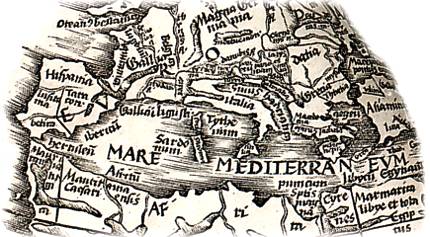Playing Cards from Spain

SPAIN has played a pivotal role in the history of playing cards in Europe and Latin America. One view is that the early history of playing cards in Europe was related to the invasion of North Africa, Spain and Sicily by Islamic forces during the Mamluk Sultanate of Egypt which ended in 1517. The Arabic word naip ( naipe = playing card ) has been used in Catalonia since 1370 or even earlier. Spain has had a complex colonial history and Spanish playing cards have travelled to the ‘New World’ where the legacy of Spanish-suited playing cards still prevails today from Mexico to Patagonia, as well as other remote parts of the globe.

An abundance of early literary references are in the Catalan or Spanish languages. Playing cards have been popular in Spain since their very first introduction there. Early sources refer to playing cards and card games in dictionaries and merchants’ inventories, to various card-makers and to prohibitions of card games, mostly around Barcelona and Valencia, in the late 1300s and early 1400s. Historical archives from Barcelona, 1380, mention a certain Rodrigo Borges, from Perpignan, and describe him as “pintor y naipero” (painter and playing card maker). He is the earliest named card-maker. Other card makers named in guild records include Jaime Estalós (1420), Antonio Borges (1438), Bernardo Soler (1443) and Juan Brunet (1443). The types of cards mentioned include “large cards, painted and gilded” as well as “Moorish” cards and “small” cards. “Naïps moreschs” are also mentioned in several inventories in distinction to other types of cards and those authors presumably had evidence to support the distinction.

With the marriage in 1468 of the Catholic monarchs Ferdinand of Aragon and Isabella of Castille, the Spanish nationality came into existence in its definitive form. The catholic monarchs inherited the trading routes linking the Cantabrian ports with Flemish and French production centres. To this they soon added trade routes to England, North Africa and Italy. Catalonia experienced a revival of its importance in the Mediterranean reaching as far as Egypt. And, of course, Columbus discovered the 'New Indies' in 1492… thus Spain became a sort of emporium for the exchange of goods and artefacts from a very broad compass reaching almost literally to all four quarters of the globe.
Some of the earliest-known tarot cards, hand painted and illuminated in the 15th century, were supposed to have been discovered in Seville although the game of tarocchi has never been played in Spain. At the same time many Spanish-suited packs were engraved in Germany during the second half of the fifteenth century. Other 15th and 16th century evidence of Spanish playing cards have turned up in Latin American museums and archives. An interesting example are the archaic Spanish-suited cards unearthed in the Lower Rimac valley, Peru during archaeological excavations which are very similar to cards by Francisco Flores preserved in the Archivo de Indias (Seville).

Above: detail from “La Sala de Las Batallas” mural painting in El Escorial palace (Madrid) produced by a team of Italian artists, late 16th century.
The Spanish state playing card monopoly was first established during the reign of Felipe II, in the 16th century. It was divided into several regions, including Mexico and ‘New Spain’, Toledo, Castile and Seville. Leases for these respective monopolies were awarded on a competitive basis to the highest bidder and subject to strict controls. Lease holders also enjoyed the protection of laws governing the playing card monopolies, which included the outlawing of contraband playing cards read more →.
Spanish playing cards are today divided into several distinctive types or patterns, some more ancient than others, which are often associated with different regions, as well as a wide range of non-standard cards which testify to the creative genius of Spanish artists. The suits are usually numbered through 1 - 12. A peculiarity to be observed in Spanish cards is that the suits of cups, swords and clubs have respectively one, two and three gaps or intervals in the upper and lower marginal lines of every card, called pintas.
REFERENCES:
- Agudo Ruiz, Juan de Dios: Los Naipes en España, Diputación Foral de Álava, 2000
- Denning, Trevor: The Playing-Cards of Spain, Cygnus Arts, London, 1996
- Garrigue, Jean-Pierre: La Carte à Jouer en Catalogne XIV & XVI siècles, Les Presses Littéraires, 2015
- Pratesi, Franco: Cinco Siglos de Naipes en España, in La Sota nº 16, Asescoin, Madrid, March 1997, pp.27-51



Monumentos de España
"Monumentos de España" souvenir playing cards manufactured by Heraclio Fournier, S.A., Vitoria (Spain), c.1955.

Monuments de Paris
‘Monuments de Paris’ souvenir playing cards produced by Heraclio Fournier, c.1964.

Moorish Deck
Review of “Trzes’ Moorish Deck” facsimile published by Ulrich Kaltenborn, Berlin, 2023.

Moorish playing cards
These two uncoloured, uncut sheets of early Moorish playing cards were formerly preserved in the Instituto Municipal de Historia in Barcelona.


Mundiales 82 playing cards
Two packs (one French-suited, one Spanish-suited) for the World Cup held in Spain, 1982.

Museo del Prado
Museo del Prado: Pintores y familias reales / Painters and royal families playing cards.

Naipe Nacional
Naipe Nacional designed by the architect, illustrator and artist Luis Alemany (1886-1943).

Naipe Navarro
Historical figures and artefacts from Navarre with designs by M. Sinués for the Navarre Association of Volunteer Blood Donors.


Naipes “El Castillo”
Hand-drawn designs by Inmaculada Gabaldón with suits based on traditional Spanish ones, published by Naipes de la Cigüeña, 1991.



Naipes de Personajes Granadinos
Forty famous men and women with links to Granada, on a pack designed by Rubén Garrido.

Naipes del Salitre
Playing cards recovered from the Northern Chile saltpetre workers. The cards are mostly from Spanish 'Cadiz' pattern decks, and several manufacturers can be identified.



Naipes Finos No.21
Naipes Finos No.21 "Hispano Americana", in the Castilian style, by Juan Roura, Barcelona, c.1940.


